How To Iron - Jackets
There's will never be an absolutely "right" way to iron but you will get better results if you follow a sensible order.
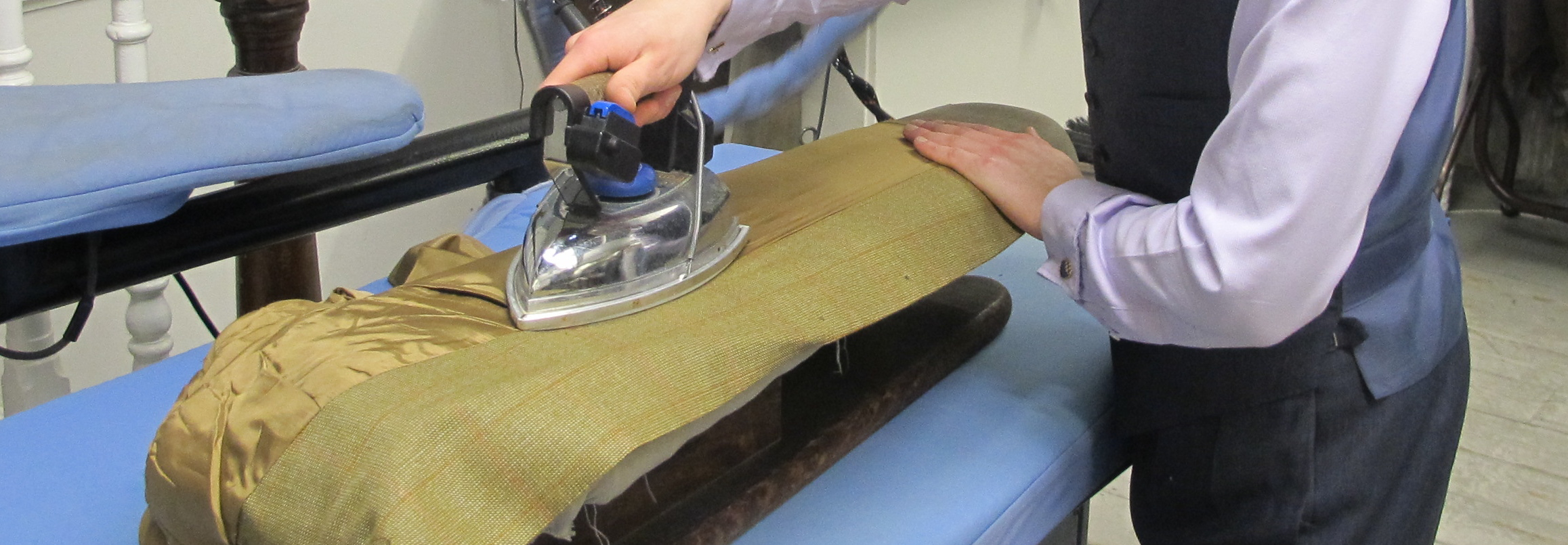
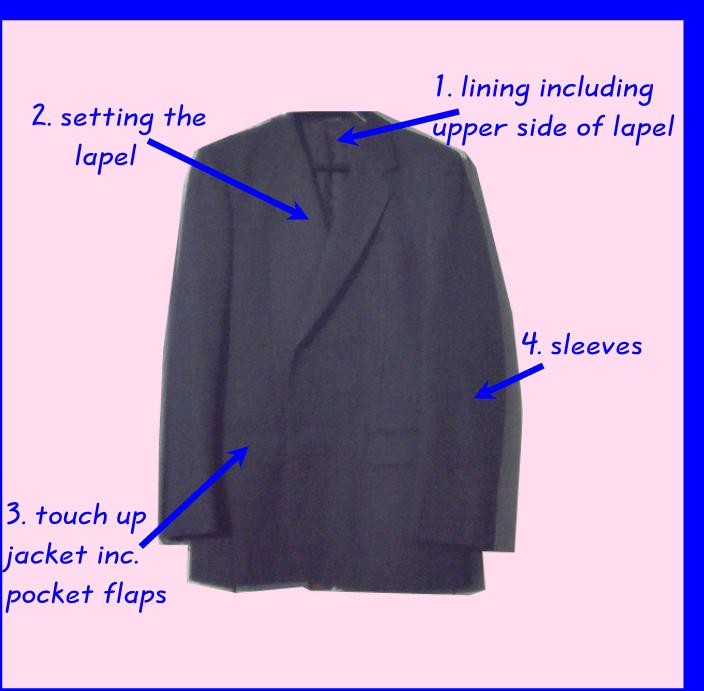
Linings are ironed on jackets more than the outer fabric because they are often made of materials prone to shine
2. Setting the lapel is perhaps the most skilled operation in pressing a jacket, they should be rolled as opposed to pressed hard with a crease.
Touching up the outside of any jacket is important as you have been ironing from the inside- out.
Sleeves are quite difficult because they have to be done on the right side and their shape is awkward. You can try to adapt a household object to help.
Jackets should be treated with care. They are often made of materials that don't take kindly to the heat from an iron. Professionals would often use a teflon shoe to protect the fabric but would also apply very little pressure when ironing from the outside. Keep this in mind if you attempt a jacket - the principle of less heat more steam is a good one.
The first item to be done on any skirt is the lining so that if you have to throw the skirt around doing the rest only the lining can get re-creased.
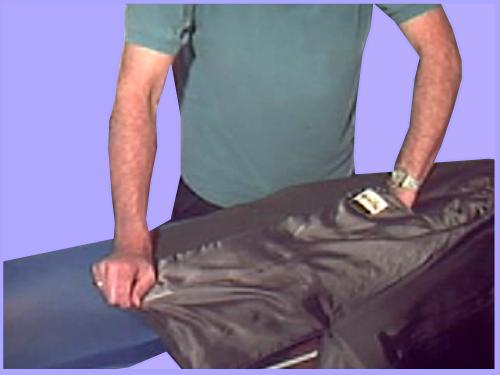
Begin by straightening all the pocket linings on the garment. Put your hand inside and stretch the lining, then grab a corner of the pocket lining from the outside, which makes sure you don't drag the lining out of position as you remove your hand.
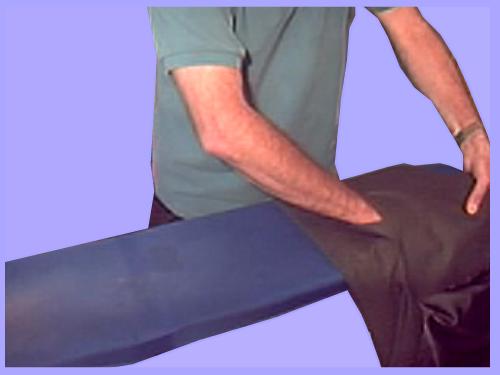
Even though you're doing the lining it makes sense to start with the lapel on the right side of the jacket. Place it flat on the board with only about 2/3 of that side on the board. Use your hands to smooth the fabric inwards from the edge, moving your hand sideways, and watch the reaction you get from the cloth. If it rolls in front of your hand note where it is forced under as this will cause a crease if you iron beyond that point. Your aim will be to stop the iron before you do that.
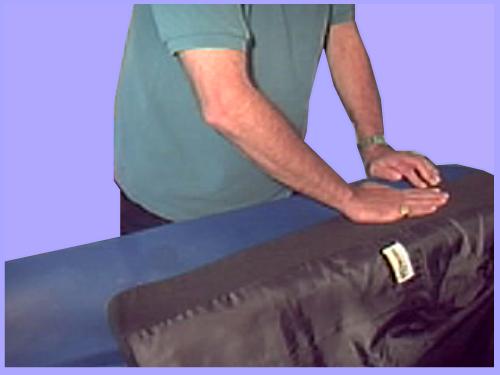
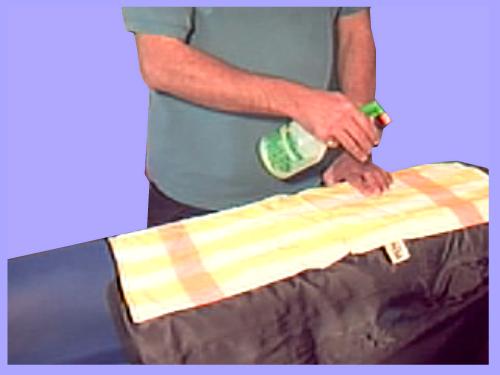
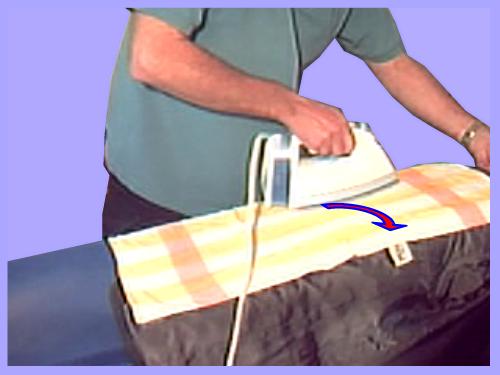

Place a cloth over the area you're going to iron and dampen it.
Start ironing from the edge and work inward, remembering to stop where the lining starts, or where you noted the fabric would crease. Go in the direction of the arrow.
Move the jacket further on to the board so that the arm hole is at the edge and the seam runs down the edge too. Smooth the cloth with your hands and make certain there are no wrinkles underneath.
Dampen the lining slightly and iron straight up from the bottom, missing any buttons on both sides of the cloth.
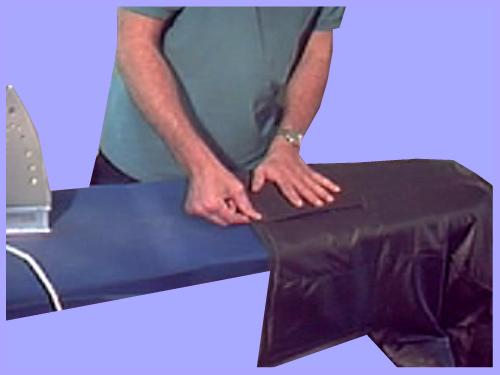
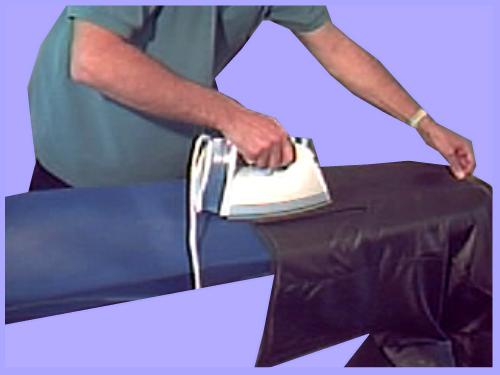
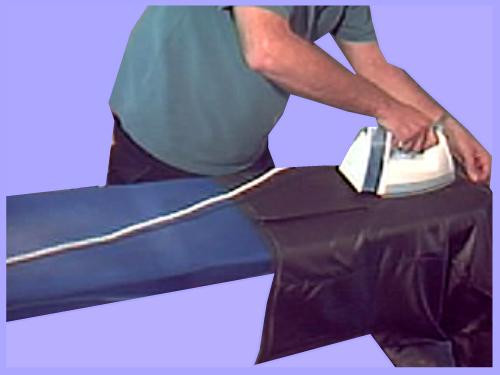
Move the jacket so that the portion under the arm hole is central to the board. Flatten the lining, making sure tha there is no wrinckled cloth on the right side by ironing with your hand and feeling the cloth underneath. Then iron up the under arm section.
Straighten any vent so that it sits as it would when worn and smooth out the whole underarm area.
This jacket has a double vent, one by each side seam at the back of the jacket.
Again dampen slightly, iron from bottom to top in one easy movement. Take the iron straight back down again and off the fabric. This movement is the one you should always use when ironing any part of the lining, unless you are negotiating a button or a pocket.
Move the jacket round to do the first section of the back then move once more to position the center of the jacket over the center of the board. Most jackets have an expansion flap in the middle of the back. This is just a pleat so grab the top and bottom of the jacket and pull. It should flatten nicely but if not slide your hand inside the fold and then pull again. Dampen and place the iron at the bottom of the jacket below the pleat. Pull the other end of the pleat and iron in one swift movement from bottom to top, you shouldn't reverse the iron movement.
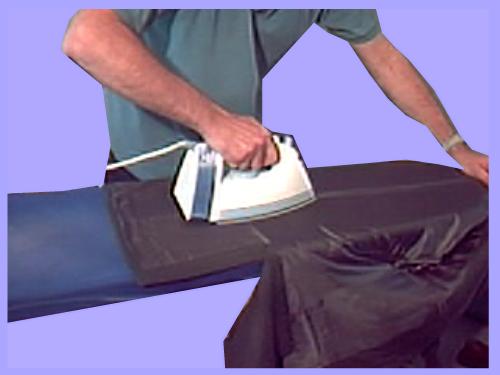
Sleeves are a problem to the ironer because of their shape and the fact that you have two layers of fabric and, most often, two layers of lining too. Sleeve boards are only part of the answer as they are usually only short boards that are awkward to get a jacket sleeve around. Follow the tips below for an easy way to iron a sleeve without using any special equipment.
Lay the sleeve down on the board making sure it's flat and that the lining is smooth as well. It's a good idea to hold the jacket up by the shoulder placing as much of the sleeve on the board as you can. The buttons and flap (or seam) to the rear of the sleeve should form the rear edge of the sleeve exactly. .
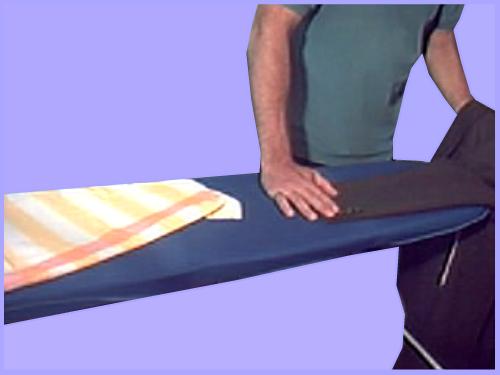
Iron the center of the sleeve only, coming close to but never going over the edge. We do not want a crease on either edge.
Remember to place a damp cloth over the sleeve (we haven't just for show).

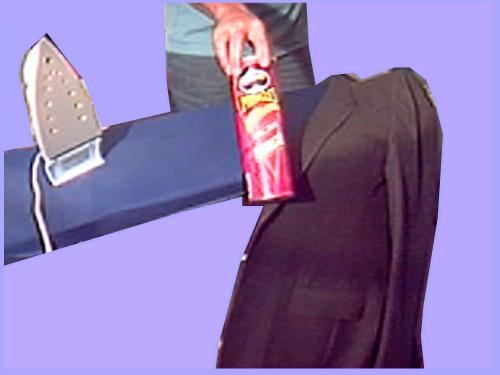
You now need to iron the front and rear edges of the sleeve and it's time to improvise. Take something round or oval that can fit in the sleeve, here we've taken a Pringles tube but you may want to use a rolling pin or even a snooker cue.
Cover the tube with a cloth or around three layers of kitchen towel place it in the sleeve in position and iron away. If there are creases in the shoulder area use this tool there as well and if it is too large simply find something that will fit and you can keep in position. We have even ironed on the handle of a brush before now because it was the only thing that would fit.
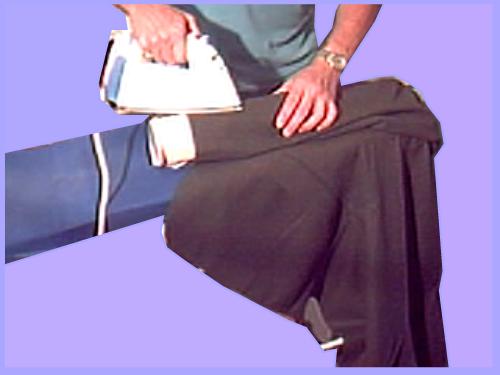
Jacket lapels should be rolled in not pressed with a crease. This gives the jacket a full soft look instead of a hard military finish. Below we show you how to achieve this without the need for professional steamers or irons.
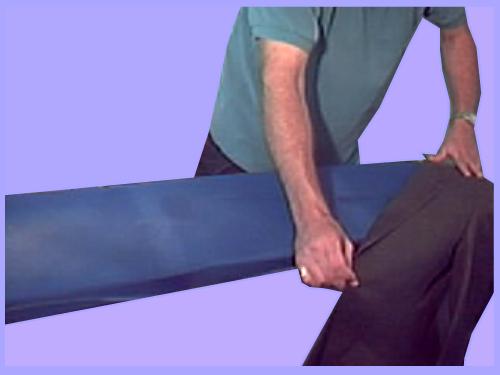
Hold the jacket over the end of the board as shown, with the jacket collar in its right place and your other hand pulling lightly by the button hole.
This gives you the correct line for the lapel, so it falls into the right place when worn.
Place a dampened cloth over the "V" section in the lapel. You can see from the picture that the majority of the lapel is NOT being ironed.
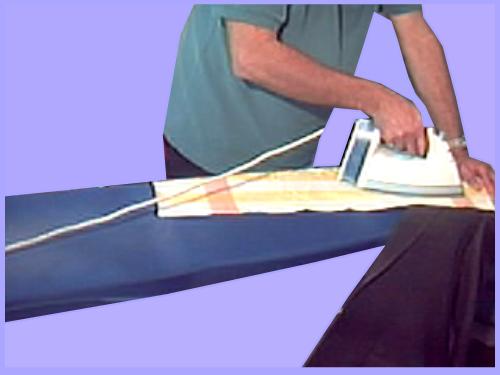
Iron by moving the iron 1/2 way in and then reverse out again at right angles to the lapel. That's all you want to do, you're just setting a light crease at the top of the lapel to neaten the area and show you where the rest should go.
With the lapel folded and fully on the board cover with a damp cloth and iron for a very short time with out adding any pressure at all. The aim is to steam the lapel without putting a crease in. Remove the cloth and use your fingers and hands as tools, smoothing the fabric around them to create the shape you want.
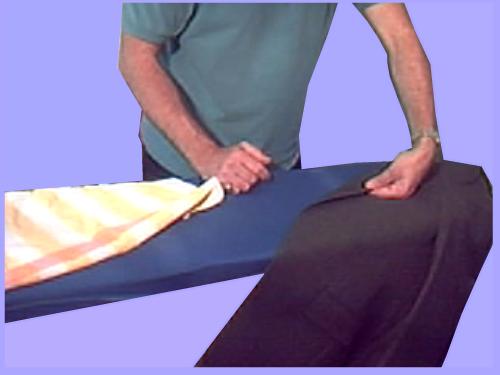
Checking that pocket flaps and outside pockets look good is important to the finish of the jacket. You also need to see if the jacket body itself needs any touching up on the outside, where wrinkles might have been set in. Always do this using a dampened cloth - mistakes can be costly and you can always redo any part of the garment if you're not quite satisfied.
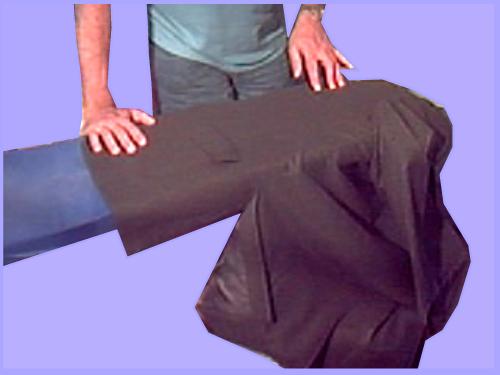
You need to check the whole side of the jacket to make sure it looks right. If it needs more work place a damp cloth on it and iron that section, remember that you can iron a very small section if that is all that needs correction. Often pocket flaps aren't right If that's the case position and flatten them with your hands before making sure the flap looks right before going any further.
Be very careful of bumps from the lining or underneath of the pocket, these can create shining if you go over them heavily with the iron. Place a damp cloth over the area and guide the iron sideways down over the flap. Remove the cloth and smooth the flap down, ensuring it appears dry before moving it off the board.
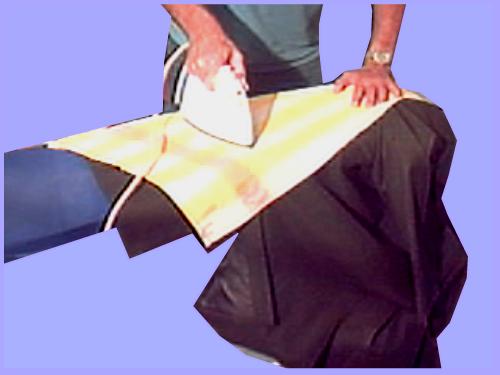
Office:
Pool House
34 Ivinghoe Road
WD23 4SW
|
|
|||

